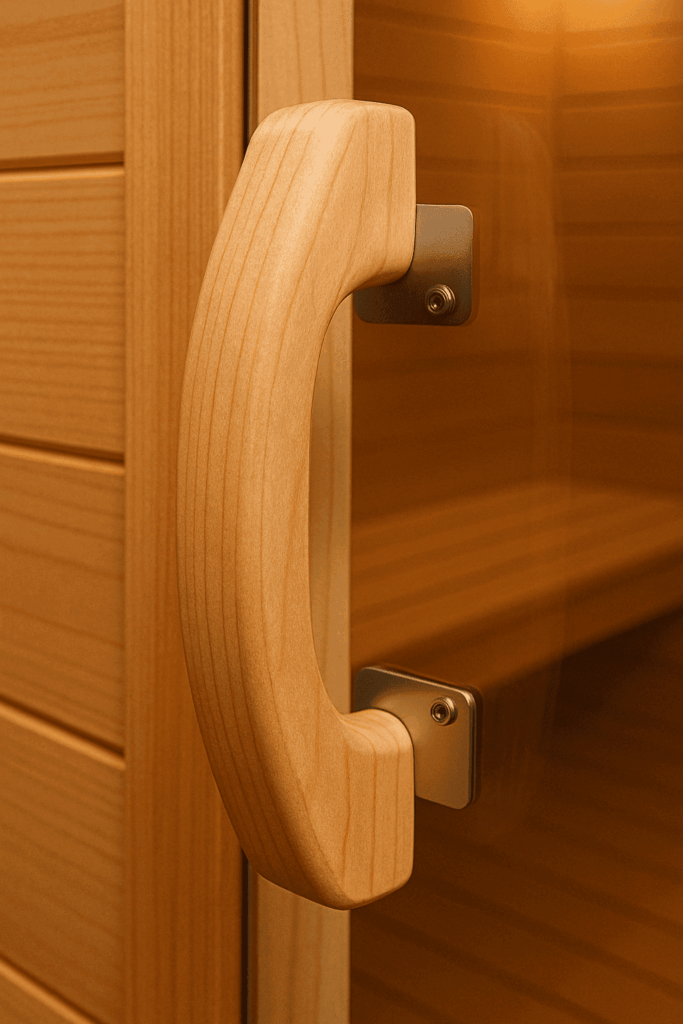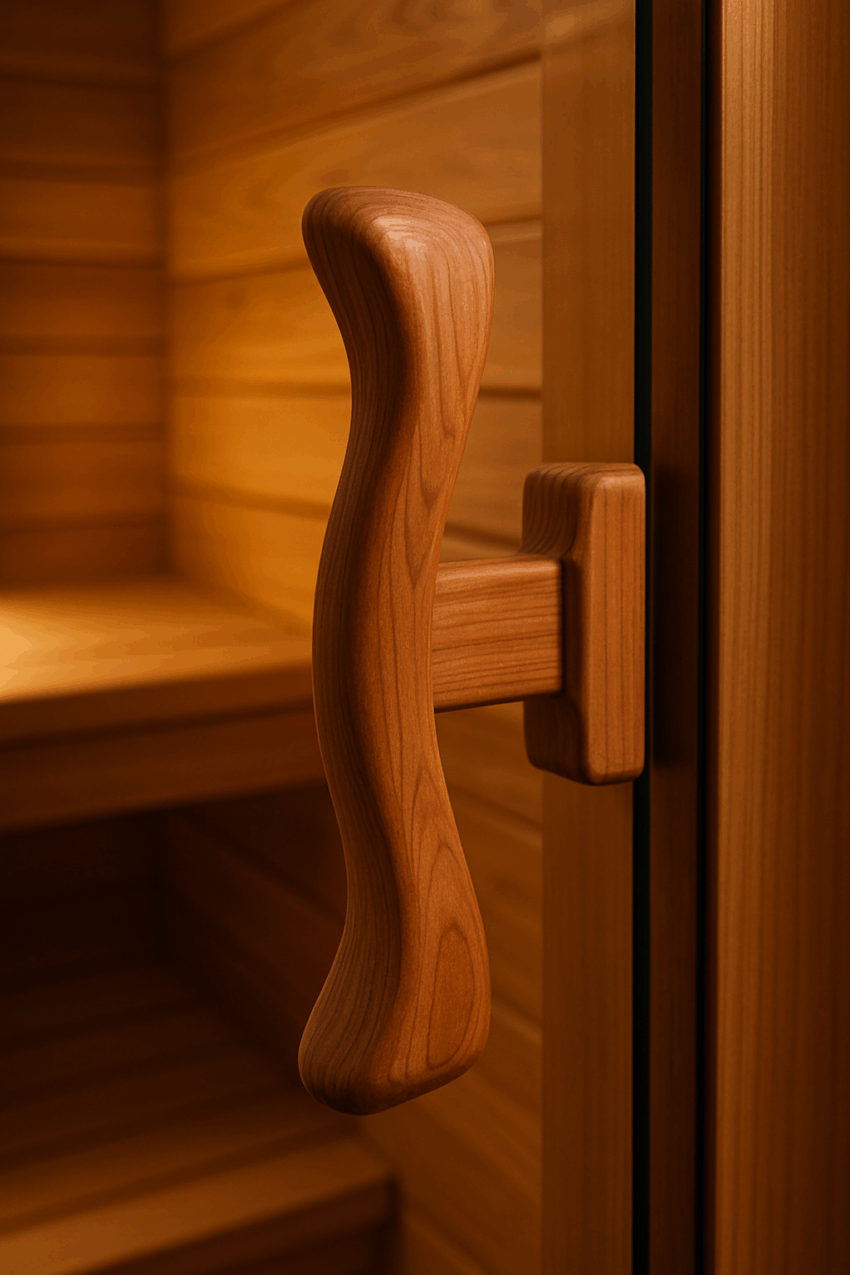Not all sauna components are created equal. The handle you choose affects more than aesthetics — it’s about safe use under extreme heat.
In high-heat environments like saunas, even small components carry significant weight. One of the most overlooked — yet vital — is the sauna door handle. This piece impacts not only how you interact with the sauna but also how well the enclosure retains heat and prevents accidents.
A good handle must remain cool enough to touch, resist moisture damage, and support easy use for all guests, including children and seniors. Choosing the wrong material or design could undermine safety and comfort.
Why the Right Door Handle Matters
1. Heat Resistance
- A high-quality handle should resist heat transfer to prevent burns.
- Avoid low-grade metal or untreated plastics, which can become dangerously hot.
2. Grip and Ergonomics
- Handles should provide a secure grip even when hands are wet or sweaty.
- Textured woods or curved designs allow easier access without strain.
3. Heat Seal Support
- A well-designed handle helps pull the door fully closed, reinforcing the sauna’s thermal seal.
- Poorly mounted or lightweight handles can lead to energy loss and longer warm-up times.
Best Materials for Sauna Door Handles
| Material | Pros | Considerations |
|---|---|---|
| Cedar / Hemlock | Naturally cool to the touch, moisture-resistant | Must be maintained (oiling/sanding) |
| Stainless Steel | Durable, modern look | Needs thermal break or insulation |
| Thermoplastics | Lightweight, heat-rated composites | Avoid if not rated for sauna use |
| Glass/Acrylic Hybrid | Aesthetic match for glass doors | Must include wood backing |

Recommended Styles
- Classic Pull Grip – Common in traditional saunas; often wood-on-wood
- Back-to-Back Glass Door Sets – Used on frameless doors; ensure insulation pads are included
- Bar Handle with Plate – Modern option, provides more surface area for grip
- Magnetic Assist Handles – Helps auto-seal door and prevent slamming
Installation Tips
- Always install handles with non-conductive fasteners to avoid hot-spot transfer from hardware.
- Check clearance and alignment to ensure the door closes smoothly and evenly.
- Place at an ergonomic height (~36–40 inches) for universal ease of use. (NIH source)
Maintenance Recommendations
- Wipe dry after each session to avoid moisture build-up.
- Quarterly checks: Tighten any loose screws or brackets.
- Annual care: Re-oil natural wood handles to prevent drying or splintering.
Avoid harsh cleaners or steam directly on the handle — it can degrade finishes over time, especially in untreated woods.
Conclusion
The sauna door handle is more than just a finishing touch — it’s a daily-use component that directly impacts safety, usability, and energy efficiency. With the right material and installation, it supports secure access, keeps surfaces safe to touch, and enhances the overall wellness experience.
Choose a design that complements your sauna’s build while offering lasting durability in high-temperature conditions.
